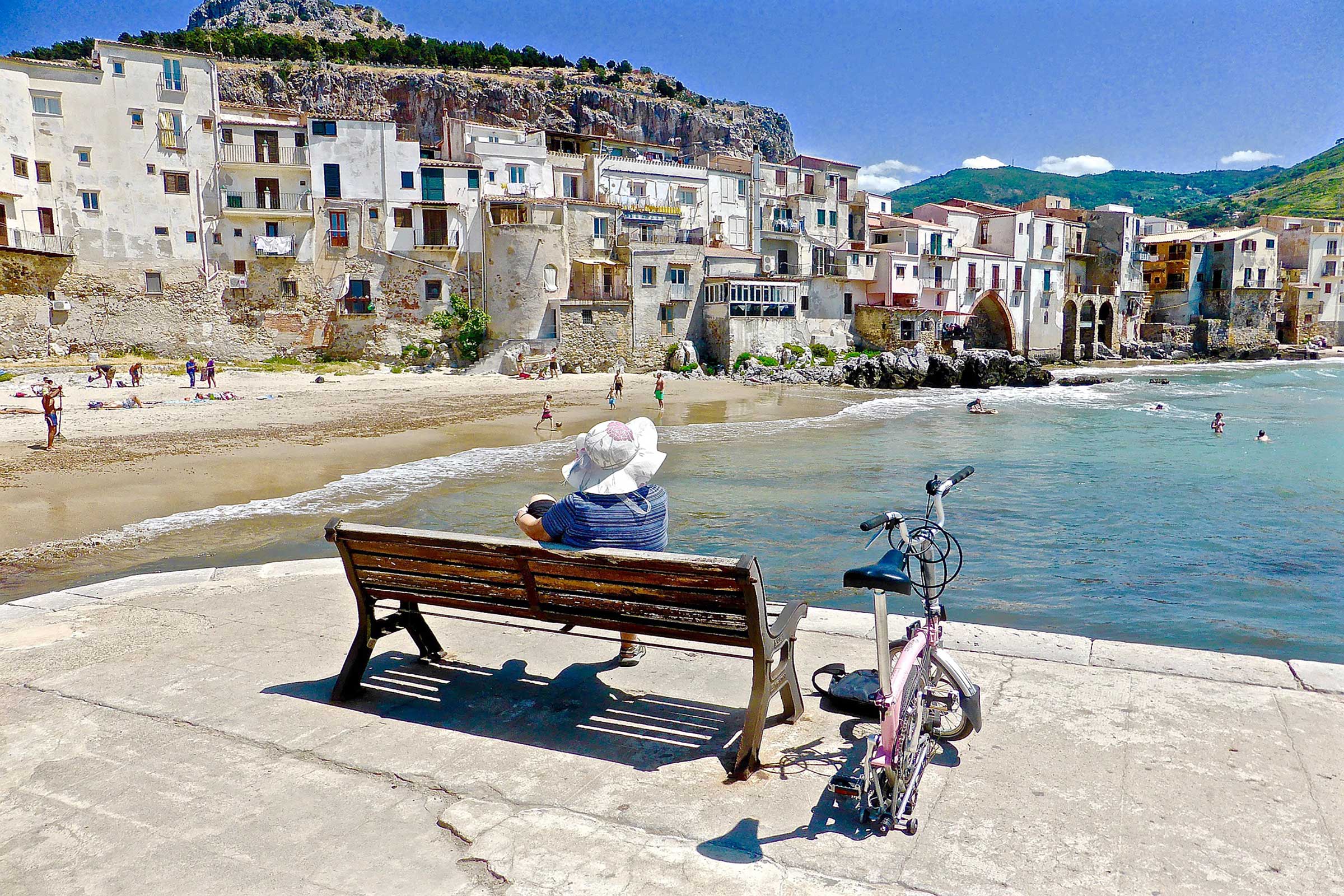Cefalù
Despite the uninterrupted series of modern buildings on its outskirts, Cefalù remains a relatively small fishing port , thanks in part to its geographical position: this picturesque town occupies every available inch of a small, beautiful promontory at the foot of a huge threatening cliff, La Rocca .
Here in 1131 Roger II had a mighty cathedral built that still dominates the skyline and the skyline of the city: the large twin towers of the façade rise above the flat roofs of the medieval quarter, while the entire structure is framed by the cliff that looms over the his shoulders. It is the main monument of the town, but visitors are also tempted by the fine sands of the beach , and it is thanks to the combination of these two factors that today Cefalù is the main tourist destination on this coast .
What to see in Cefalù
Cefalù Cathedral
The duomo-cathedral of Cefalù represents, together with the Palatine Chapel of Palermo and the Cathedral of Monreale, one of the highest expressions of Arab-Norman art. According to legend, the cathedral was built in the twelfth century by Roger II following the vow made during a violent storm off the coast of Cefalù, however it is more likely that the cathedral is the result of the stormy relations between Roger and the Palermo archbishopric.
Such an imposing construction far from Palermo was probably intended to curb the growing influence of the papacy in Sicily. The elaborate Byzantine mosaics of the central apse are dominated by the figure of Christ Pantocretor , the Almighty holding an open Bible with an inscription in Latin and Greek from John 8:12.
Framed by the Rocca, the twin towers of the cathedral rise above the Piazza del Duomo.
The fortress
It was here that the Islamic citadel stood before 1063, when the Norman conquest moved the town from the mountain to the bay below. The overwhelming beauty of the rocky wall that forms the backdrop to the Moorish alleys of the historic center has attracted several directors to Cefalù who have chosen it as the location for their films, including the famous Nuovo Cinema Paradiso . An imposing staircase, the Via Saraceni , winds along the three orders of the walls and in 30 minutes you reach the top of the Rocca. There is a magnificent view of the city below, while the nearby Temple of Diana from the 4th century BC offers a romantic setting for young people in love. Apart from a few scattered stones there is nothing left of the Norman Castle that once crowned the top of the Rocca, nor of the Arab citadel.
Mandralisca Museum
A collection of Greek ceramics and Arab terracottas is of modest interest, of great interest is Portrait of an unknown man, the first portrait of Antonello da Messina of which we have news.
Activities and hobbies
The crescent-shaped beach of Cefalù is one of the most popular on the entire coast . In summer it is always very crowded. At the beach bar you can rent umbrellas and deck chairs. To access some sections of the beach, you need to buy a ticket. The city is a great place for walking. The charming little port, where fishermen can sometimes be seen repairing their nets, is full of narrow fishing boats. The walk along the seafront is a pleasant evening habit.
Shopping
Like Taormina , Cefalù is a paradise for tourists. The medieval streets are full of luxury jewelers , there are also some excellent delis where you can stock up on wine and oil.
Information
All activities in the historic part of Cefalù are concentrated in Corso Ruggero and its side alleys. The port, with the hydrofoil dock, is located on the eastern side of the fortress. From the train station, following via Roma and along via Matteotti you reach the historic center
Sanctuary of Gibilmanna
If you start from Cefalù the first stop could be the sanctuary of Gibilmanna located just 14 km from the city on the wooded slopes of Pizzo Sant'Angelo , a place made sacred by the Arabs, who told of miraculous acts of the Madonna. The sanctuary is a destination for pilgrimages that culminate with the feast of 8 September but also throughout the summer the area is frequented by many people who picnic under the cypresses or admire the superb panorama from the viewpoint that sweeps from the mountainous hinterland and the green valleys up to the Tyrrhenian Sea.
The museum next to the sanctuary collects art objects taken from churches, convents and monasteries in the area, and there is a restaurant nearby. The only possibility of accommodation is one kilometer from the sanctuary, you stay in small cottages near the farm, whose owners organize pony rides in spring and summer. The splendid surroundings offer endless possibilities for walks and excursions in the mountains and in the woods, accompanied by the gentle tinkling of cowbells.
